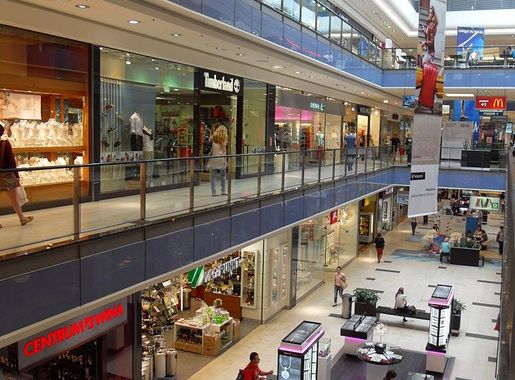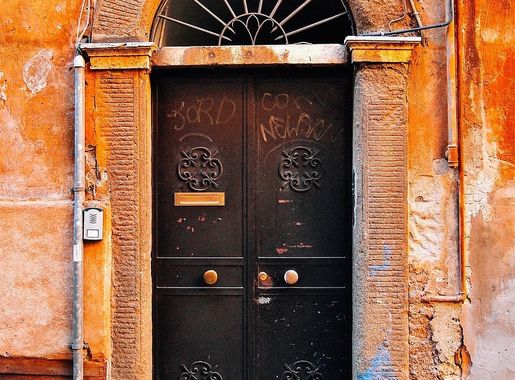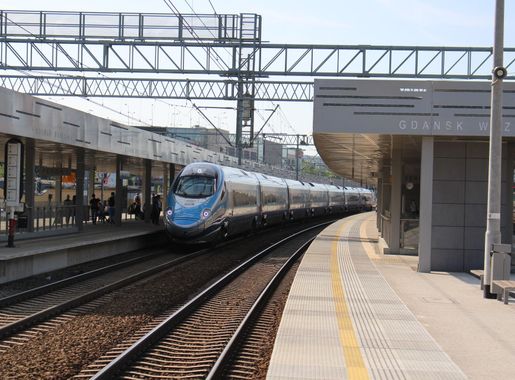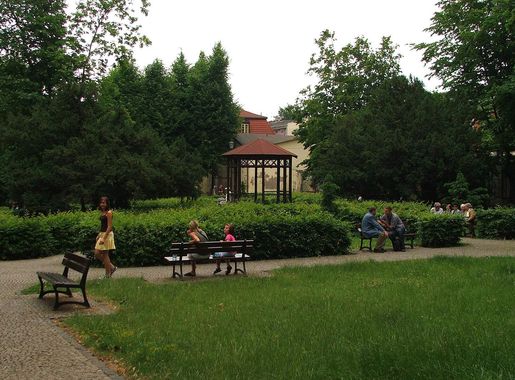
Wrzeszcz: The Heartbeat of Gdansk
Discover Wrzeszcz: A vibrant blend of history, culture, and modernity in the heart of Gdansk, Poland. Perfect for history buffs, foodies, and art lovers alike.
Nestled in the vibrant city of Gdansk, Wrzeszcz is a lively neighbourhood that seamlessly blends history with modernity. Known for its eclectic mix of architectural styles, Wrzeszcz offers a unique glimpse into both the past and present of Poland. The area is peppered with charming old buildings, remnants of the city's storied history, while contemporary shops and cafes inject a fresh energy into the streets. Stroll through the bustling Market Hall, a historic landmark where you can sample local delicacies and find fresh produce. The neighbourhood is also home to the upscale Galeria Baltycka shopping mall, which offers a variety of international and local brands. For a more relaxed experience, take a walk in Jaśkowa Dolina Park, a lush green space perfect for picnics and leisurely strolls. Art enthusiasts will appreciate Wrzeszcz's thriving cultural scene, with numerous galleries showcasing both traditional and modern Polish art. The area is also a hub for live music, with several venues offering performances ranging from classical to contemporary genres. Whether you're a history buff, a foodie, or an art lover, Wrzeszcz has something to offer everyone.
Local tips in Wrzeszcz
- Visit the historic Market Hall early in the morning for the freshest produce and local delicacies.
- Take a stroll in Jaśkowa Dolina Park for a peaceful break from the bustling city streets.
- Check out the local galleries for a taste of both traditional and contemporary Polish art.
- Explore the area on foot to fully appreciate the eclectic architectural styles.
- Try the local cafes for a taste of Polish cuisine and culture.
Wrzeszcz: The Heartbeat of Gdansk
Nestled in the vibrant city of Gdansk, Wrzeszcz is a lively neighbourhood that seamlessly blends history with modernity. Known for its eclectic mix of architectural styles, Wrzeszcz offers a unique glimpse into both the past and present of Poland. The area is peppered with charming old buildings, remnants of the city's storied history, while contemporary shops and cafes inject a fresh energy into the streets. Stroll through the bustling Market Hall, a historic landmark where you can sample local delicacies and find fresh produce. The neighbourhood is also home to the upscale Galeria Baltycka shopping mall, which offers a variety of international and local brands. For a more relaxed experience, take a walk in Jaśkowa Dolina Park, a lush green space perfect for picnics and leisurely strolls. Art enthusiasts will appreciate Wrzeszcz's thriving cultural scene, with numerous galleries showcasing both traditional and modern Polish art. The area is also a hub for live music, with several venues offering performances ranging from classical to contemporary genres. Whether you're a history buff, a foodie, or an art lover, Wrzeszcz has something to offer everyone.
Iconic landmarks you can’t miss
Park Kuźniczki
Discover the tranquility of Park Kuźniczki in Gdańsk, a perfect blend of nature and charm for a memorable outdoor experience.
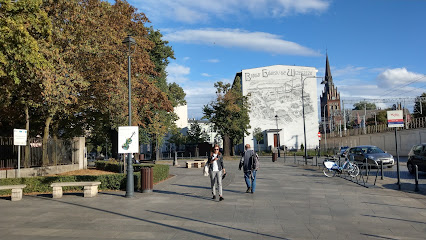
Park Akademicki
Discover the serene beauty of Park Akademicki in Gdańsk, a lush escape perfect for relaxation and outdoor activities amidst nature's charm.
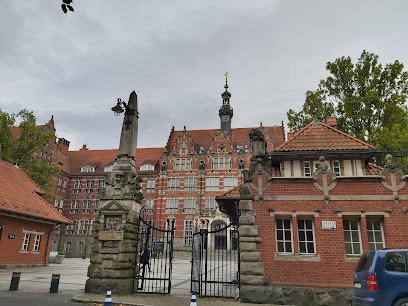
Rondo im. Güntera Grassa
Discover the enchanting Rondo im. Güntera Grassa, a picturesque roundabout in Gdańsk adorned with lush gardens and striking architecture.
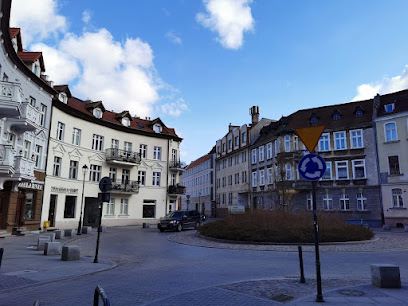
Dwór Studzienka
Explore Dwór Studzienka, a historical gem in Gdańsk, where rich heritage meets stunning architecture amidst serene gardens.
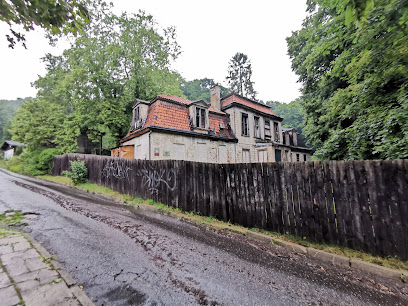
Mural z Krawczykiem
Explore Mural z Krawczykiem in Gdańsk, a vibrant testament to the city's artistic heritage, perfect for photography and cultural appreciation.
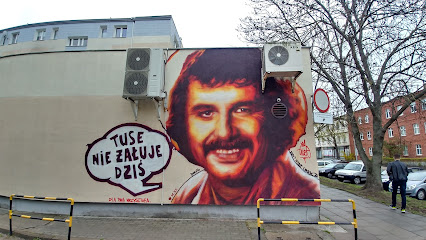
Ruiny Górzyny
Explore the captivating Ruins of Górzyna in Gdańsk, a historical gem that offers a serene escape into the past amidst nature's beauty.
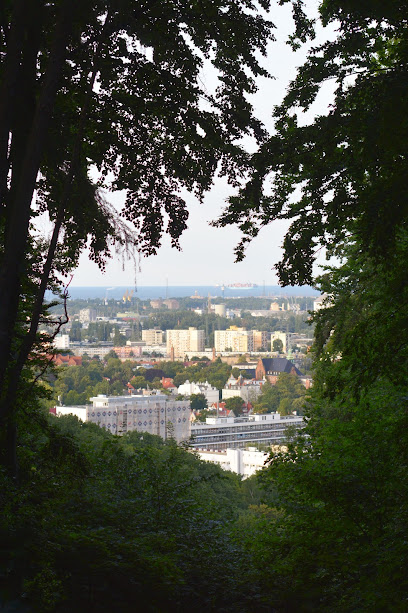
Historyczna kamienica K. Dąbrowskiego (Dobronski) i Augusta Wienera z ok. 1890 r
Explore the enchanting Historic Dąbrowski and Wiener Tenements in Gdańsk, a captivating glimpse into the city's rich architectural heritage.
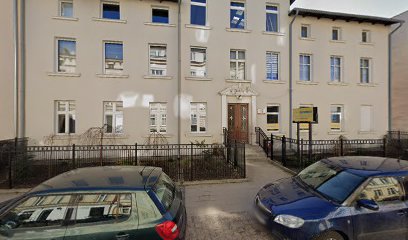
Marktplatz
Explore the historic charm of Marktplatz in Gdańsk, a cultural hub filled with stunning architecture, local cuisine, and vibrant markets.

Historical location of Danzig Langfuhr station
Discover the rich history of rail travel at Danzig Langfuhr Station, a beautiful museum in Gdańsk showcasing vintage locomotives and railway heritage.
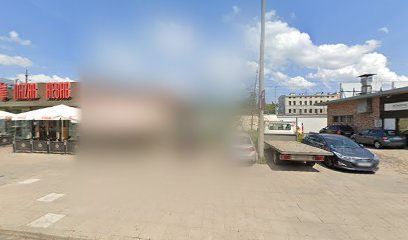
Historical location of riding hall of the West Prussian Train Bataillon No. 17
Explore the Historical Riding Hall of the West Prussian Train Bataillon No. 17 in Gdańsk, a captivating site revealing the city's military heritage.
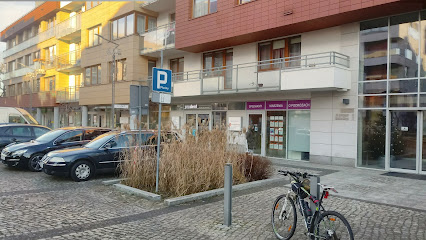
Unmissable attractions to see
Oliwski Park
Discover the tranquility of Oliwski Park in Gdańsk, a beautiful blend of nature and history perfect for relaxation and exploration.

Westerplatte
Discover Westerplatte, a historic monument in Gdańsk, Poland, symbolizing resilience during World War II and set against the stunning Baltic Sea.
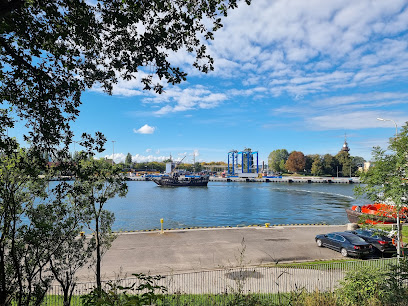
Long Market
Explore Long Market, a historical gem in Gdańsk, featuring stunning architecture, vibrant markets, and rich cultural experiences.

Góra Gradowa
Experience the breathtaking views and historical significance of Góra Gradowa, Gdańsk's scenic hilltop treasure.
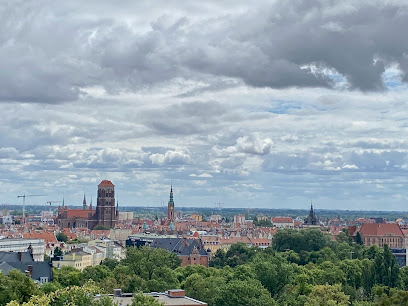
Loopy's World Amusement Park
Discover the thrills of Loopy's World Amusement Park in Gdańsk, a family-friendly destination packed with exciting rides and interactive fun.
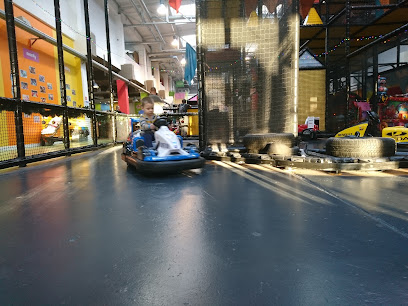
Papugarnia Gdańsk
Discover the enchanting Papugarnia Gdańsk, where exotic birds, aquatic wonders, and delicious pizzas come together for a memorable family adventure.
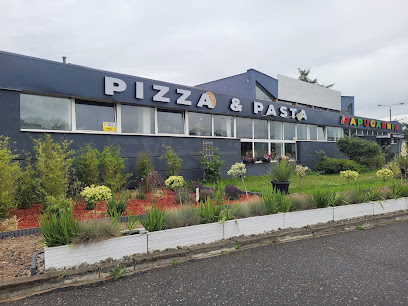
Monument to the Fallen Shipyard Workers of 1970
Explore the Monument to the Fallen Shipyard Workers of 1970 in Gdańsk, a powerful symbol of resilience and a cornerstone of Poland's history.
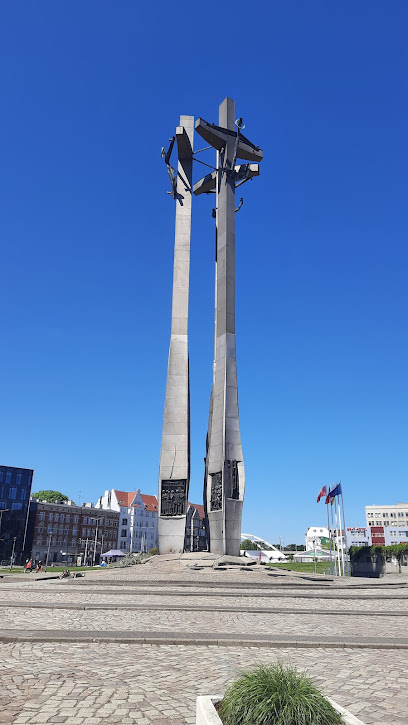
Gdańsk Neon Sign
Discover the vibrant Gdańsk Neon Sign, a stunning blend of history and art that illuminates the city's cultural heritage.
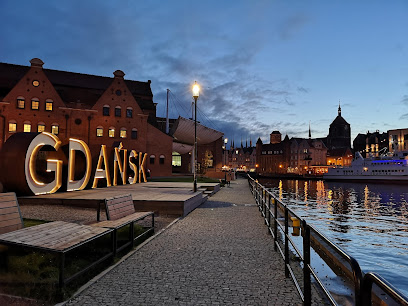
Jaśkowa Valley Park
Explore the tranquil beauty of Jaśkowa Valley Park in Gdańsk, a perfect blend of nature, relaxation, and outdoor activities for all visitors.
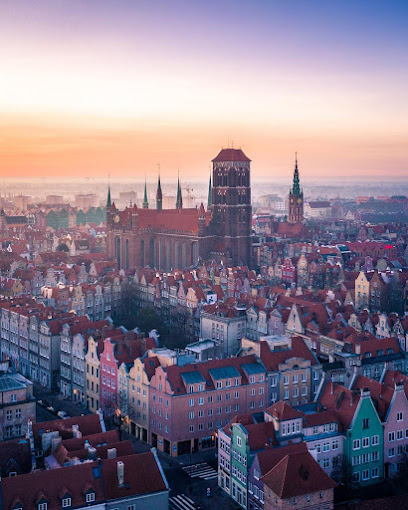
Hevelianum
Explore the wonders of science and history at Hevelianum, a captivating attraction in Gdańsk for families and curious minds alike.

Wystawa Budowli z Klocków LEGO® Gdańsk
Discover the enchanting Wystawa Budowli z Klocków LEGO® in Gdańsk, where creativity and imagination come to life through stunning LEGO displays.

Park Kuźniczki
Explore the serene beauty of Park Kuźniczki in Gdańsk, a peaceful retreat filled with nature, vibrant gardens, and local culture.
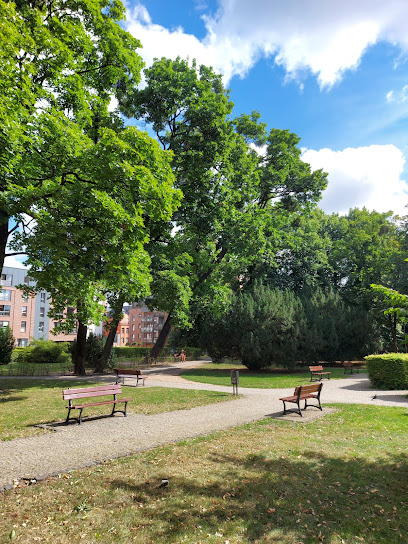
Park Akademicki
Discover the tranquil charm of Park Akademicki, a lush urban park in Gdańsk, perfect for relaxation, picnics, and outdoor activities amidst nature's beauty.
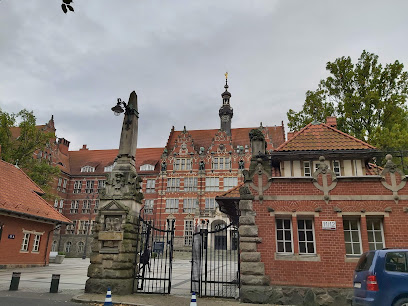
Uphagen Park
Explore the lush landscapes of Uphagen Park, a tranquil urban oasis in Gdańsk perfect for relaxation, picnics, and enjoying nature's beauty.
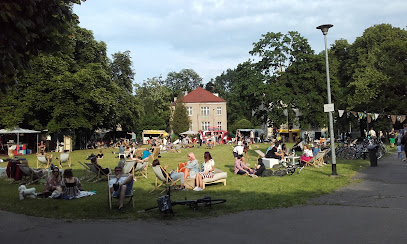
Głaz przy Krętej
Discover the serene beauty of Głaz przy Krętej in Gdańsk, a stunning natural landmark perfect for nature lovers and peaceful retreats.

Essential places to dine
AïOLI inspired by Gdańsk
Experience European flavors at AïOLI Inspired by Gdańsk - where fresh ingredients meet culinary creativity in a vibrant setting.
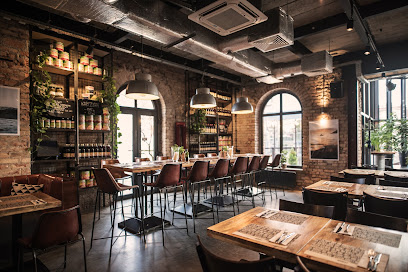
POBITEGARY . Wrzeszcz
Discover POBITEGARY in Gdańsk's Wrzeszcz: A culinary haven where traditional Polish flavors meet modern gastronomy.
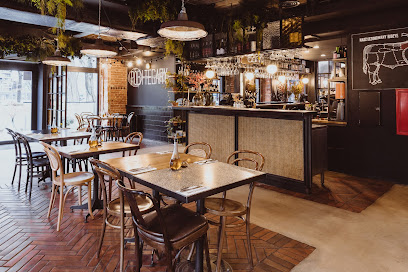
Avocado Vegan Bistro
Discover the vibrant flavors of plant-based cuisine at Avocado Vegan Bistro in Gdańsk - a must-visit destination for food enthusiasts.
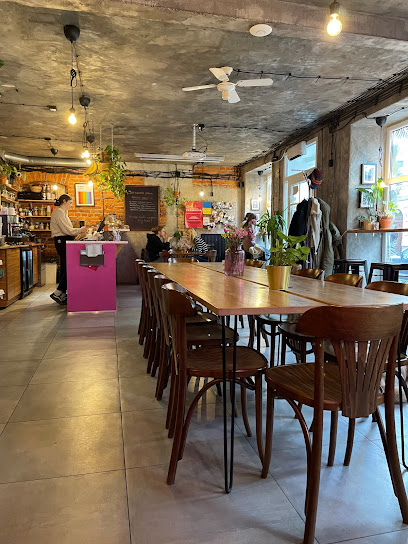
ELIKSIR Restaurant & Cocktailbar
Discover exquisite Polish cuisine and masterfully crafted cocktails at ELIKSR Restaurant & Cocktailbar in Gdańsk.
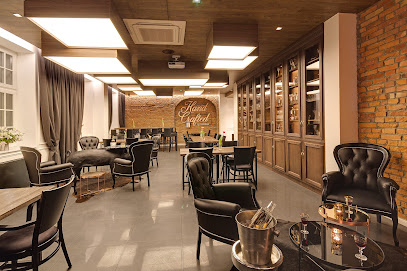
Chochla
Savor the essence of Polish cuisine at Chochla, Gdańsk's beloved soup and pie shop offering warmth and deliciousness.

LULA food & drink
Savor the essence of modern European cuisine at LULA Food & Drink in Gdańsk—where innovation meets tradition in every bite.
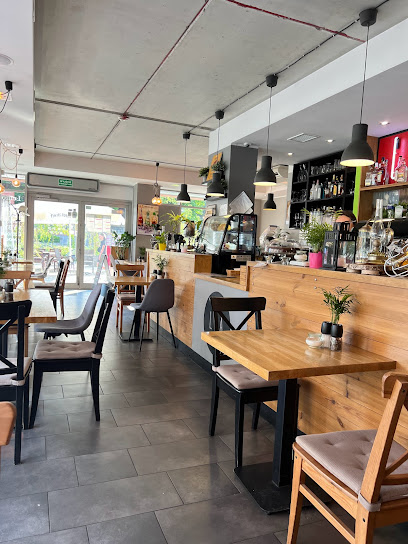
Jaffa Eat & Drink
Discover authentic Israeli cuisine in Gdańsk at Jaffa Eat & Drink – a culinary gem offering vibrant flavors and warm hospitality.
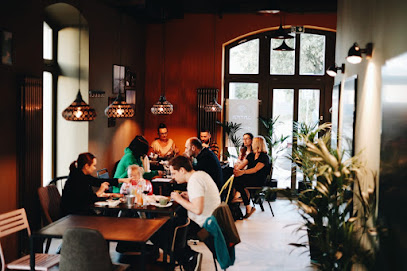
Hacjenda
Discover authentic Polish flavors at Hacjenda in Gdańsk - where tradition meets taste in a warm and inviting setting.
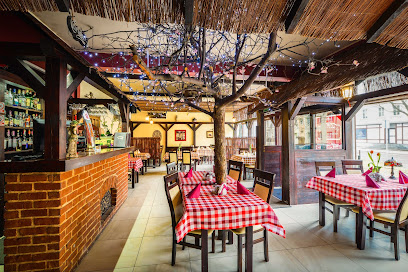
Hewelke Restaurant & Bakery | Restauracja Gdańsk | Piekarnia (wt - sob 7:00 - 20:00)| Koktajl bar Gdańsk Wrzeszcz
Discover the culinary artistry at Hewelke Restaurant & Bakery in Gdańsk - where exquisite dishes meet delightful baked goods.
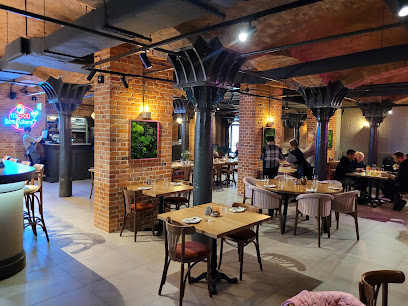
Zielona Papuga
Discover authentic Polish flavors at Zielona Papuga in Gdańsk - where tradition meets taste in every dish.
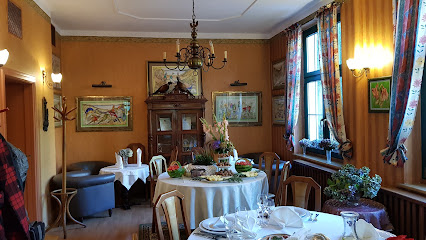
Markets, malls and hidden boutiques
Galeria Bałtycka
Explore Galeria Bałtycka in Gdańsk for a vibrant shopping experience, featuring diverse retailers, delightful dining, and family-friendly fun.
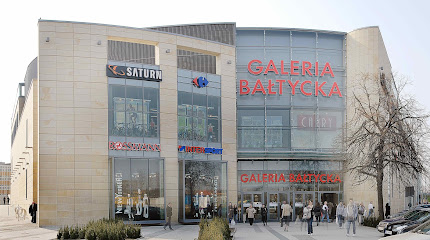
Galeria Metropolia
Explore Galeria Metropolia in Gdańsk for a unique shopping experience with diverse shops, dining, and entertainment options.
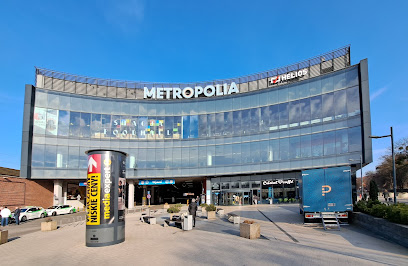
Manhattan
Discover Manhattan in Gdańsk: Your ultimate shopping destination featuring diverse retail, dining options, and family-friendly activities.
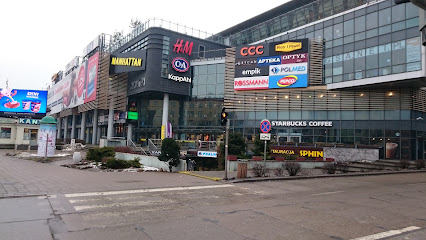
Flying Tiger Copenhagen
Explore Flying Tiger Copenhagen in Gdańsk for vibrant gifts, quirky home goods, and unique finds that capture the spirit of creativity and fun.
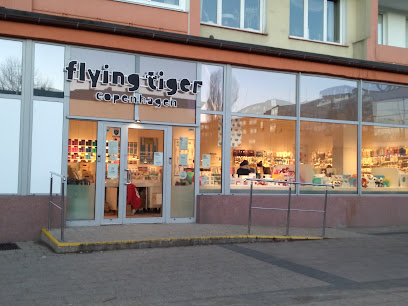
La Boutique
Explore La Boutique in Gdańsk for unique vintage clothing and sustainable fashion treasures that reflect local culture and history.
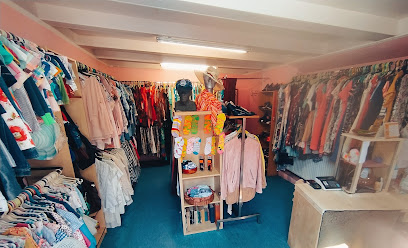
Klamoty
Explore Gdańsk's Klamoty for a unique vintage clothing experience, filled with eclectic finds and sustainable fashion treasures.

POP concept store
Experience the charm of Gdańsk at POP Concept Store, where modern design meets local craftsmanship in a unique shopping destination.
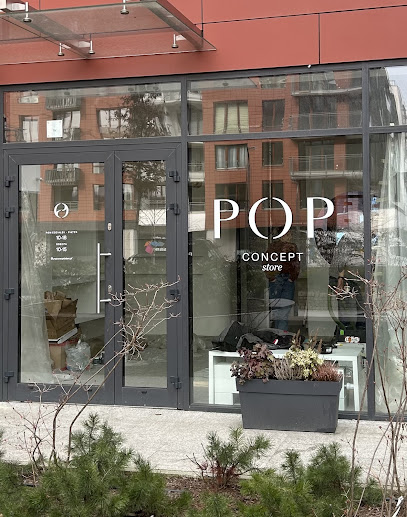
TRANZYT
Explore TRANZYT in Gdańsk, a vintage clothing store where each piece tells a story, offering styles from classic to edgy for every fashion enthusiast.
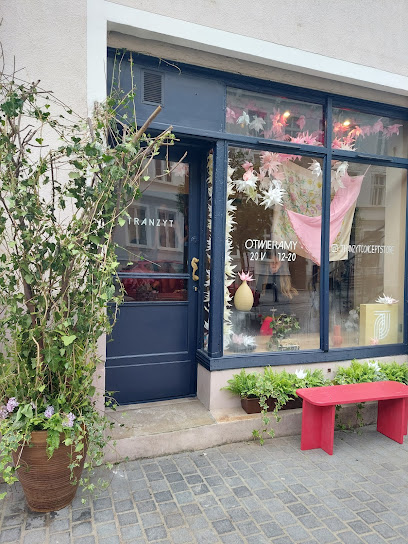
Eva boutique. Kujawa-Stopczyńska I.
Discover unique fashion pieces and local designs at Eva Boutique in Gdańsk, a must-visit destination for style-savvy travelers.
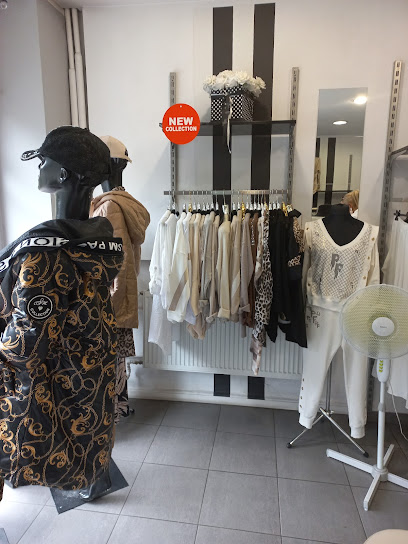
Galeria Bukowski
Explore Galeria Bukowski in Gdańsk for unique gifts, local crafts, and authentic Polish souvenirs that capture the essence of your travels.

Essential bars & hidden hideouts
ELIKSIR Restaurant & Cocktailbar
Experience the culinary delight of ELIKSR Restaurant & Cocktailbar, where Polish traditions meet modern European flair in a vibrant atmosphere.
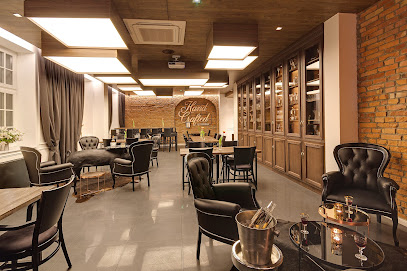
Graciarnia
Discover Graciarnia in Gdańsk: A lively brewpub offering craft beers, board games, and a welcoming lounge atmosphere.
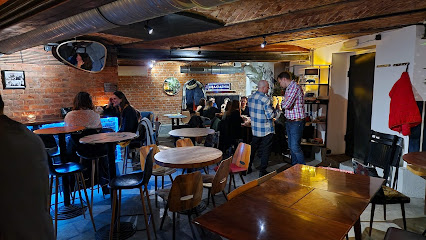
Pub Spółdzielczy
Discover the vibrant brewpub culture of Gdańsk at Pub Spółdzielczy, where craft beer meets delicious local cuisine in a welcoming atmosphere.

Polufka Pub
Experience the heart of Gdańsk at Polufka Pub, where craft beer meets cozy ambiance and delicious Polish cuisine.
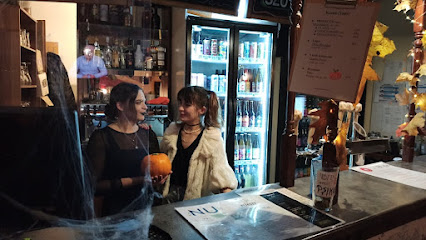
Z INNEJ BECZKI
Discover the vibrant craft beer scene at Z Innej BeczkI, a cozy brewpub in Gdańsk offering unique flavors and delicious pairings.
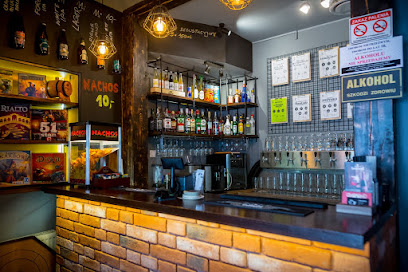
Sports Pub
Experience the thrill of sports and nightlife at Gdańsk's top sports pub, where excitement and great company collide.
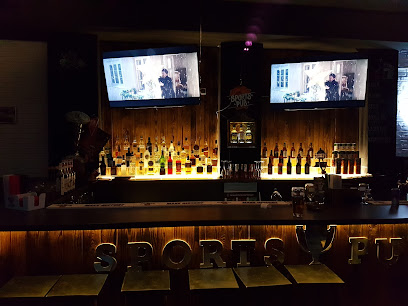
Encyk Bar
Discover Gdańsk's Encyk Bar, a cozy pub offering a warm atmosphere, diverse drink selections, and a vibrant community spirit for all visitors.
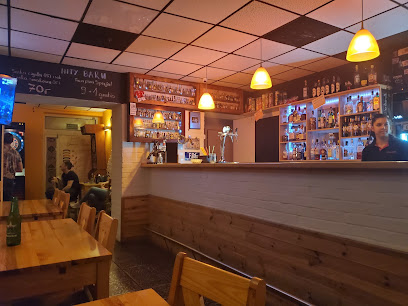
AleBrowar Wajdeloty
Experience the vibrant atmosphere and exceptional craft beers at AleBrowar Wajdeloty, a must-visit brewery pub in Gdańsk.
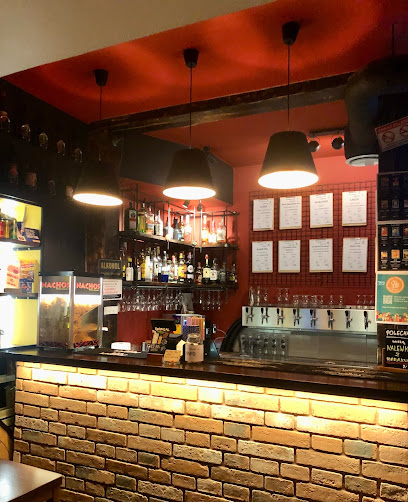
Bifor
Experience the best of Gdańsk at Bifor, a lively brewpub offering craft beers, delicious food, and a vibrant sports atmosphere.
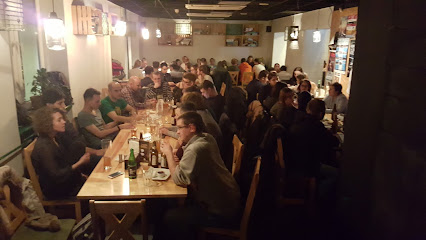
Pod rurami
Discover the charm of Gdańsk at Pod rurami, a cozy bar offering a delightful selection of drinks and a warm atmosphere for relaxation.

Local Phrases
-
- HelloCześć
[cheshch] - GoodbyeDo widzenia
[do veedzenia] - YesTak
[tak] - NoNie
[nye] - Please/You're welcomeProszę
[prosheh] - Thank youDziękuję
[dzhehn-koo-yeh] - Excuse me/SorryPrzepraszam
[psheh-prah-sham] - How are you?Jak się masz?
[yak shyeh mahsh] - Fine. And you?Dobrze. A Ty?
[dohb-zheh. ah tee] - Do you speak English?Czy mówisz po angielsku?
[chi moovish poh ahn-gyehl-skoo] - I don't understandNie rozumiem
[nye roh-zoo-myem]
- HelloCześć
-
- I'd like to see the menu, pleaseChciałbym zobaczyć menu, proszę
[hchya-wim zoh-bah-chich meh-noo, proh-sheh] - I don't eat meatNie jem mięsa
[nye yem myen-sah] - Cheers!Na zdrowie!
[nah zdroh-vyeh] - I would like to pay, pleaseChciałbym zapłacić, proszę
[hchya-wim zah-plah-cheech, proh-sheh]
- I'd like to see the menu, pleaseChciałbym zobaczyć menu, proszę
-
- Help!Pomocy!
[poh-mo-tsi] - Go away!Idź sobie!
[idge soh-byeh] - Call the Police!Zadzwoń po policję!
[zahd-voon poh poh-leet-syeh] - Call a doctor!Zadzwoń po lekarza!
[zahd-voon poh leh-kahr-zah] - I'm lostZgubiłem się
[zgoo-bee-wem shyeh] - I'm illJestem chory
[yeh-stem hoh-ri]
- Help!Pomocy!
-
- I'd like to buy...Chciałbym kupić...
[hchya-wim koo-peech] - I'm just lookingTylko się rozglądam
[tsee-koh shyeh rohz-gwah-dahm] - How much is it?Ile to kosztuje?
[ee-leh toh kohs-too-yeh] - That's too expensiveTo za drogie
[toh zah droh-gyeh] - Can you lower the price?Czy mogłbyś obniżyć cenę?
[chi moh-gw-bish ohb-nee-zhich cheh-neh]
- I'd like to buy...Chciałbym kupić...
-
- What time is it?Która jest godzina?
[ktoh-rah yest goh-dzee-nah] - It's one o'clockJest pierwsza
[yest pyehr-voosh-ah] - Half past (10)Jest wpół do jedenastej
[yest vpoow doh yen-eh-nah-stehy] - MorningRano
[rah-no] - AfternoonPopołudnie
[poh-poo-wood-nyeh] - EveningWieczór
[vyeh-choor] - YesterdayWczoraj
[v-choh-rye] - TodayDzisiaj
[dzhee-sheye] - TomorrowJutro
[yoo-tro] - 1Jeden
[yeh-den] - 2Dwa
[dvah] - 3Trzy
[tshih] - 4Cztery
[ch-teh-ri] - 5Pięć
[pyehtch] - 6Sześć
[sheshch] - 7Siedem
[syeh-dem] - 8Osiem
[oh-shem] - 9Dziewięć
[dzyeh-vee-nyeh] - 10Dziesięć
[dzye-shyehch]
- What time is it?Która jest godzina?
-
- Where's a/the...?Gdzie jest...
[g-dzhe yest] - What's the address?Jaki jest adres?
[yah-ki yest ah-drehs] - Can you show me (on the map)?Czy możesz mi pokazać (na mapie)?
[chi moh-zhesh mee poh-kah-zahch (nah mah-pyeh)] - When's the next (bus)?Kiedy jest następny (autobus)?
[kyeh-dy yest nah-stehp-ny ah-oo-toh-boos] - A ticket (to ....)Bilet (do ....)
[bee-let (doh)]
- Where's a/the...?Gdzie jest...
History of Wrzeszcz
-
Wrzeszcz, historically part of the Pomeranian region, has roots tracing back to the early medieval period. It was originally a small fishing settlement along the path of trade routes connecting Gdansk to the interior of Pomerania. The name 'Wrzeszcz' is derived from the Polish word for 'bark', referring to the tree bark that was commonly used in the area for various purposes.
-
In the late 13th century, Wrzeszcz began to integrate into the growing city of Gdansk. This integration was part of a broader trend as the city expanded its boundaries and absorbed surrounding villages. The establishment of Gdansk as a Hanseatic port in the 14th century further increased the significance of Wrzeszcz as a transport and trade hub.
-
The 19th century marked a significant transformation for Wrzeszcz with the arrival of the railway in 1870. This connectivity spurred industrial growth, leading to the establishment of factories and warehouses. The neighbourhood became a center for workers drawn by job opportunities, contributing to its urban development and demographic changes.
-
Wrzeszcz experienced considerable destruction during World War II, as Gdansk was a strategic location throughout the conflict. After the war, the area underwent reconstruction, and the Polish government initiated extensive housing projects to accommodate the influx of Polish citizens from other parts of the country, leading to a diverse community.
-
In the late 20th and early 21st centuries, Wrzeszcz has evolved into a vibrant cultural and commercial district. The area is known for its mix of historical architecture and modern developments, including shopping centers, cafes, and cultural venues. Its proximity to the Gdansk University of Technology has also fostered a youthful and dynamic atmosphere, making it a favored locale for students and young professionals.
Wrzeszcz Essentials
-
Wrzeszcz is easily accessible from other neighbourhoods in Gdansk. The most convenient way to reach Wrzeszcz is via the SKM (Szybka Kolej Miejska) train, which connects Gdansk with surrounding areas. The Wrzeszcz train station is located in the heart of the neighbourhood. Public buses also serve the area, with routes connecting to Gdansk's main attractions and other neighbourhoods. From Gdansk Main Station, take a direct train or bus to Wrzeszcz, which typically takes around 10-15 minutes.
-
Wrzeszcz is well-served by public transport, including SKM trains and local buses. The area is also bicycle-friendly, with dedicated bike lanes and rental services available. Walking is a pleasant option, especially in the picturesque parts of Wrzeszcz, like the Park of the Soldiers of the 1st Polish Army. For longer trips or late-night excursions, taxis and ride-sharing services are readily available.
-
Wrzeszcz is generally a safe neighbourhood for tourists. However, as with any urban area, it is advisable to remain vigilant, particularly in crowded places. Areas around the Wrzeszcz train station are usually busy, so keep an eye on your belongings. Avoid poorly lit streets at night and be cautious around less populated areas. Petty crime, such as pickpocketing, can occur, so it’s wise to practice standard safety precautions.
-
In case of an emergency, dial 112 for police, fire, or medical assistance in Poland. The local police station is located in Wrzeszcz, and several hospitals are within a short distance. It is advisable to have travel insurance that covers emergencies. Pharmacies are also available throughout the neighbourhood for minor health issues.
-
Fashion: Do dress appropriately, especially when visiting places of worship or formal settings. Don't wear overly revealing clothing. Religion: Do respect local customs and practices, particularly in churches. Public Transport: Do be courteous to others and offer your seat to the elderly. Don't eat or drink on public transport. Greetings: Do greet locals with a friendly 'Dzień dobry' (Good morning/afternoon). Avoid overly casual greetings with strangers. Eating & Drinking: Do try local cuisine at restaurants or cafes. Don't refuse food or drink offered by locals, as it's considered impolite.
-
To experience Wrzeszcz like a local, visit the vibrant local markets, especially the market on ul. Wajdeloty, where you can find fresh produce and regional specialties. Engage with locals, many of whom are friendly and willing to share insights about the area. Don't miss visiting the historic architecture, such as the impressive Church of St. Anne. For a unique experience, explore the nearby Park Oliwa, known for its beautiful gardens and the Oliwa Cathedral.
Trending Landmarks in Wrzeszcz
-
Park Kuźniczki
-
Park Akademicki
-
Rondo im. Güntera Grassa
-
Dwór Studzienka
-
Mural z Krawczykiem
-
Ruiny Górzyny
-
Historyczna kamienica K. Dąbrowskiego (Dobronski) i Augusta Wienera z ok. 1890 r
-
Marktplatz
-
Historical location of Danzig Langfuhr station
-
Historical location of riding hall of the West Prussian Train Bataillon No. 17
Nearby Cities to Wrzeszcz
-
Things To Do in Sopot
-
Things To Do in Elblag
-
Things To Do in Olsztyn
-
Things To Do in Bydgoszcz
-
Things To Do in Torun
-
Things To Do in Klaipėda
-
Things To Do in Poznan
-
Things To Do in Suwalki
-
Things To Do in Liepaja
-
Things To Do in Szczecin
-
Things To Do in Warsaw
-
Things To Do in Kalmar
-
Things To Do in Lodz
-
Things To Do in Marijampolė
-
Things To Do in Bialystok

